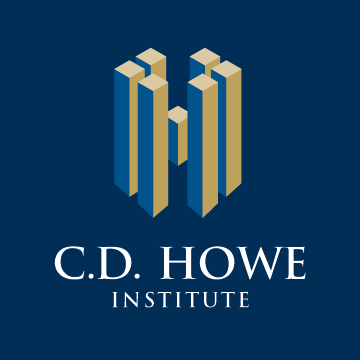Home / Publications / Intelligence Memos / Is the Bank of Canada Too Optimistic?
- Intelligence Memos
- |
Is the Bank of Canada Too Optimistic?
Summary:
| Citation | Don Drummond. 2025. "Is the Bank of Canada Too Optimistic?." Intelligence Memos. Toronto: C.D. Howe Institute. |
| Page Title: | Is the Bank of Canada Too Optimistic? – C.D. Howe Institute |
| Article Title: | Is the Bank of Canada Too Optimistic? |
| URL: | https://cdhowe.org/publication/is-the-bank-of-canada-too-optimistic/ |
| Published Date: | October 31, 2025 |
| Accessed Date: | October 31, 2025 |
Outline
Outline
Authors
Related Topics
Files
From: Don Drummond
To: Fiscal observers
Date: October 31, 2025
Re: Is the Bank of Canada Too Optimistic?
The Bank of Canada labels US tariffs a structural shock to the Canadian economy.
There seems an effort to depict the economic projection in the October 2025 Monetary Policy Report as rather grim. It is noted, for example, that the level of output at the end of 2026 is 1.5 percent lower than in the January 2025 projection, with most of the loss due to tariffs.
Yet much of the narrative and to a degree the numbers are more aligned with a cyclical experience than a structural shock. For several reasons, the Bank’s outlook should be considered subject to serious downside risks. If they manifest, the 2.25 percent the Bank set this week may not be the bottom for the overnight rate and there will be tremendous pressure on other Canadian policy authorities to shore up the economy.
The Bank assumes tariffs remain as at present. Implicitly this means continuation of the Canada-United States-Mexico free trade agreement or something else that delivers duty-free trade on all products and services not subject to the current specific tariffs.
That does not feel like a safe bet.
There are constant threats from Donald Trump and others in the US administration of further tariff attacks. The unofficial agreements struck with other countries feature base tariffs of at least 10 percent applied to all trade not subject to specific and more punitive measures. As noted in the Bank’s discussion of risk, higher tariffs would further weaken economic prospects.
Examining the growth rates of output from fourth quarter-to-fourth quarter is revealing of the dynamics in the Bank’s forecast. For 2025 that growth rate is a lowly 0.5 percent. But for both 2026 and 2027 growth recovers to 1.6 percent. It is true these growth rates are not sufficient to make up for the depressed level of output at the end of 2025. But that is not a bad recovery, especially given minimal population growth.
One can flip the consideration of the Bank’s projection and instead of reflecting on weakness, ask why various aspects are not more negative given the scale of the challenges. Why is there no contraction in real housing investment? If businesses were not investing much when they thought they had relatively free access to the US market, why would investment begin to recover in 2027 when that access will likely remain lost and new opportunities not yet established?
With trade diversification beyond the United States difficult, why are real exports only slightly lower in 2027 than in 2024? What is replacing the lost US business that quickly?
The benign outlook depicted for inflation could be compromised by importation of higher inflation from the United States and elsewhere and the possibility of a weaker Canadian dollar. That would leave the Bank in the difficult position of a substantial output gap coinciding with inflation pressures.
The Bank’s Monetary Policy Report suggests that serious consideration should be given to a wide range of outcomes for the Canadian economy given the heightened uncertainty. Yet scant attention is paid to the fat tail of downside risks. There is only a brief discussion in the risk section that higher tariffs would depress the economy further and put downward pressure on inflation. Unlike recent reports, there is no consideration of an alternative, more negative scenario.
For its credibility, the Bank of Canada should address the distinct possibility of deeper and more prolonged economic malaise from the US tariffs and the interaction with our starting conditions of weak productivity and competitiveness. To contain the downside, the Bank may need to go further and cut again.
Having said all that, demand policies, whether monetary or fiscal, will not save the economy from a structural shock. The structure of spending and taxation and other policies need to be transformed to do more for productivity, competitiveness, innovation and growth and a lot less must be done in areas that compromise these goals.
Don Drummond is a Fellow-in-Residence at the C.D. Howe Institute and Stauffer-Dunning Fellow at Queen’s University.
To send a comment or leave feedback, email us at blog@cdhowe.org.
The views expressed here are those of the author. The C.D. Howe Institute does not take corporate positions on policy matters.
Want more insights like this? Subscribe to our newsletter for the latest research and expert commentary.
Related Publications
- Intelligence Memos

